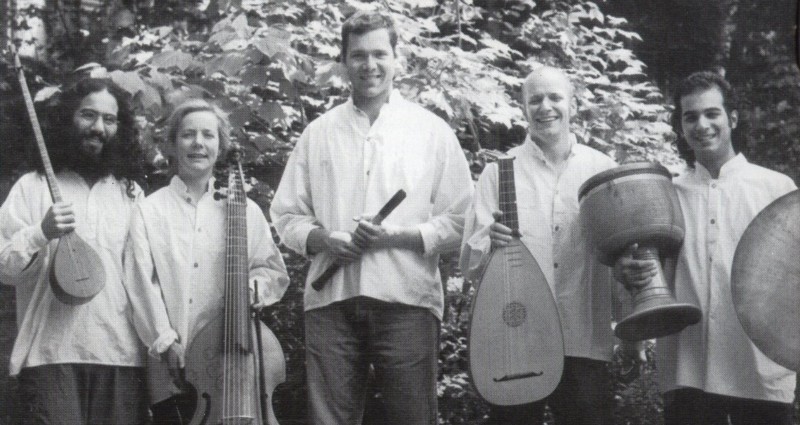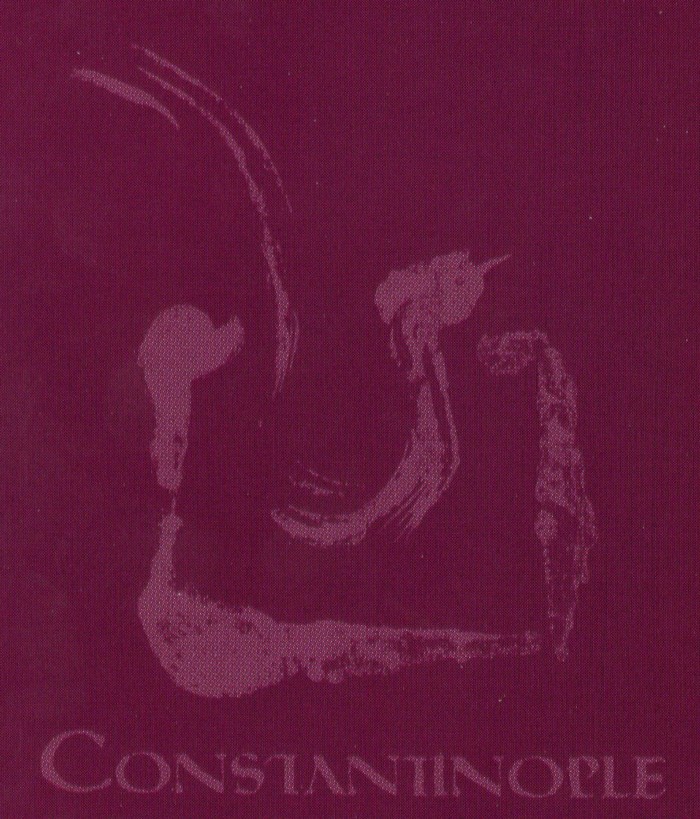Musique du Moyen Âge et de la Renaissance
Ensemble Constantinople

medieval.org
constantinople.ca
Atma "Classique" ACD 2 2269
Ⓟ + © 2001
1. Branle de la haye (Arbeau) [4:20]
2. Branle d'Escosse (Arbeau) [2:57]
3. Branle du village (Balard) [5:58]
4. Pazzo e Mezzo (anonyme) [2:06]
5. Hardi (Radif) [2:20]
6. Yekchoubeh (Radif) [1:24]
7. Saltarello (anonyme) [2:58]
8. Estampie anglaise (anonyme) [4:39]
9. Sospitati dedit egros (anonyme) [2:52]
10. Mignonne allons (anonyme) [3:38]
11. Saltarello (anonyme) [2:44]
Cancionero Musical de Palacio
12. La Tricotea (Alonso) [2:42]
13. So el Enzina (anonyme) [2:52]
14. Tres morillas (anonyme) [2:23]
15. Danza alta (Torre) [3:44]
16. Un amiga tengo (Enzina) [1:35]
17. Tir'alla, que non quiero (Alonso) [2:38]
18. Callabaza no sé (anonyme) [2:42]
19. Al alva venid (anonyme) [2:36]
20. Rodrigo Martinez (anonyme) [2:09]
21. Fata la parte (Enzina) [3:02]
22. Pedro, i bien te quiero (Enzina) [1:27]
23. Todos los bienes del mundo (Enzina) [5:10]
CONSTANTINOPLE
Kiya Tabassian
Kiya Tabassian — setar
Mike Cole — lute
Isabelle Marchand — viola da gamba
Matthew Jennejohn — recorders
Ziya Tabassian — tombak, dayereh, daf, def, percussions

The
Constantinople ensemble has been in existence for four years. Its name
comes from the legendary city of Constantinople, which for centuries was
the point of confluence and exchange between the cultures of East and
West. This musical ensemble, of variable format, thus thrives on two
geographically distant cultural and musical worlds, those of Iran and of
Europe. These two cultures, although far apart today, were at certain
times continually exchanging in areas such as the sciences, the arts,
and philosophy, in some instances yielding fruitful results.
Constantinople
seeks to rekindle this spirit by delving into the musical heritage of
the Medieval and Renaissance periods. The ensemble especially endeavours
to recreate a rich and living utterance, based on creativity and on the
knowledge of classical Persian art music and the early music of Europe.
This means creating a musical language that gives free reign to
improvisation and fancy while upholding and respecting the basic forms
of those musical eras.
The ensemble's instrumentation is rather
unique: The use of the setar as a solo instrument opens a new vista in
the performance of Medieval and Renaissance music.
Nous remercions de son soutien le Conseil des Arts du Canada,
qui a investi 21 millions de dollars l'an dernier dans la musique travers le Canada.
We acknowledge the support of the Canada Council for the Arts
which last year invested $21 million in music troughout Canada.
Recorded and mixed by William Dueck, Val Morin (Québec)
Digital editing: Chris Murtagh
Produced by Kiya Tabassian a William Dueck (ombù productions)
Photos: Shahin Parhami, William Dueck
Cover art: Ali Qu Jabbadar, Isfahan, circa 1660 or 1670
Graphic design : Diane Lagace

Crossroads
Constantinople
performs music that had previously existed in other forms. For this
first CD, the ensemble approaches the music of the Middle Ages and of
the Renaissance based on the musical manuscripts that have come down to
us. Since there is little reliable information on the historic
performance of this music, Constantinople reinterprets these manuscripts
in its own way. In this spirit, the group creates instrumental
arrangements of all the pieces and strives to recapture certain aspects
of the performance practice and colours of Iranian art music.
The
first part of this recording is made up of a wide-ranging selection
from the repertoire of the Middle Ages and the beginning of the
Renaissance, consisting mainly of instrumental and secular music. The branles are French instrumental pieces that used to accompany
dances.
Although these pieces were collected at the beginning of the
Renaissance, their melodic nature reveals their Medieval origin. The Pazzo e mezzo, typically Italian, is an instrumental form based on the varied repetition of a theme throughout the piece. Harbi and Yek Choubeh are pieces that are today part of the permanent repertoire of classical Persian music, the radif.
Before entering the repertoire of art music, they were played to
accompany dances of an epic nature. These two pieces are followed by a Saltarello, a very lively instrumental dance from the 15th century. Estampie anglaise is another instrumental dance of the time, which Constantinople arranged in a new fashion with regards to tempo. Sospitati dedit egros is the only sacred and polyphonic work of this first part. Originally vocal, this piece comes from Amiens, France. Mignon allons
is a song that dates from the beginning of the Renaissance. The
composer is anonymous, but the melody is as lovely as the words by the
French poet Ronsard. The Saltarello, which means 'small leap' is
another quick Italian dance, and brings the first part to a close. All
these pieces, although in specific forms, leave much room for
interpretive freedom and improvisation between the various sections, as
well as in the choice of instrumentation.
The second part consists of pieces taken from the musical collection Cancionero musical de Palacio.
Dating from the beginning of the 16th century, this set contains pieces
that were apparently sung and played at the court of Ferdinand II and
at those of los Reyes Catolicos The richness of this music—simple
and constant though is its formal layout— is revealed through its
melodic interplay and ornamentation. Although written for three or four
sung parts, these pieces are presented by Constantinople in instrumental
arrangements.
Translation: Jacques-Andre Houle




